Growing up in the Philippines, the sight of smoke rising from street-side grills and that unmistakable aroma of Chicken Inasal brings back memories of after-school merienda runs to Mang Inasal, where "unli-rice" wasn't just a meal option – it was a challenge accepted.
Whether you were a student stretching your allowance for that extra rice serving, or a busy office worker treating teammates to a satisfying lunch, Chicken Inasal has always been our go-to comfort food.
The best part? Watching the manong skillfully turn those perfectly marinated chicken pieces over hot coals, while you and your friends eagerly wait for that first bite of juicy meat drowned in chicken oil.
Today, I'm sharing how to recreate this Bacolod favorite at home, perfect for those times when you're craving that familiar taste of Chicken Inasal, but want to enjoy it with the whole family around your own dining table.
Jump to:
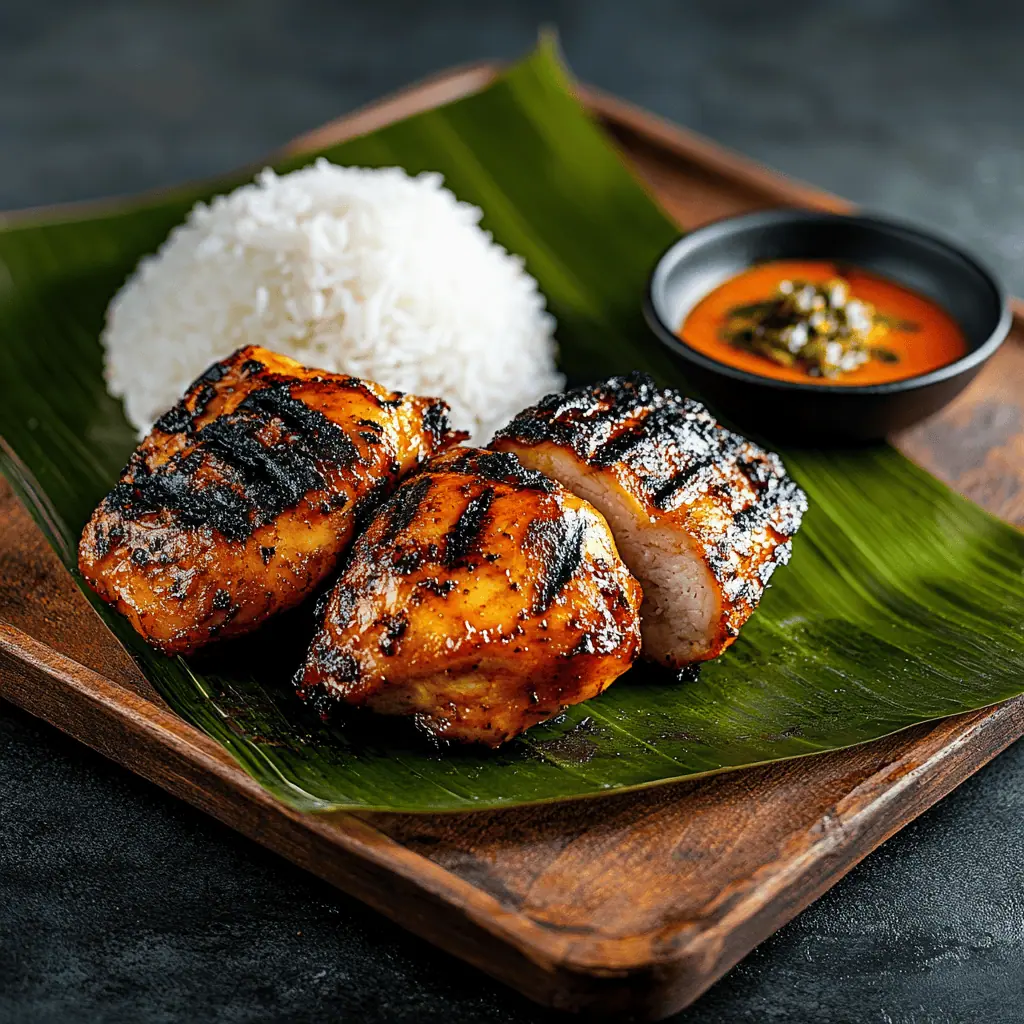
Why You'll Love This Recipe
- Authentic Flavors: Experience the true taste of Bacolod with our perfectly balanced marinade
- Foolproof Instructions: Detailed steps ensure success, even for beginners
- Make-Ahead Friendly: Can be marinated overnight for easy entertaining
- Restaurant-Quality Results: Achieve that signature smoky-citrus flavor at home
- Family-Sized: Perfect for Filipino family gatherings or "handaan"
- Budget-Friendly: More economical than restaurant versions
Ingredients
This carefully curated blend creates the authentic Bacolod flavor profile. The calamansi and vinegar tenderize the meat while adding tanginess, lemongrass and ginger provide aromatic depth, and the annatto oil gives the chicken its signature golden-orange color and rich flavor that makes Chicken Inasal truly special.
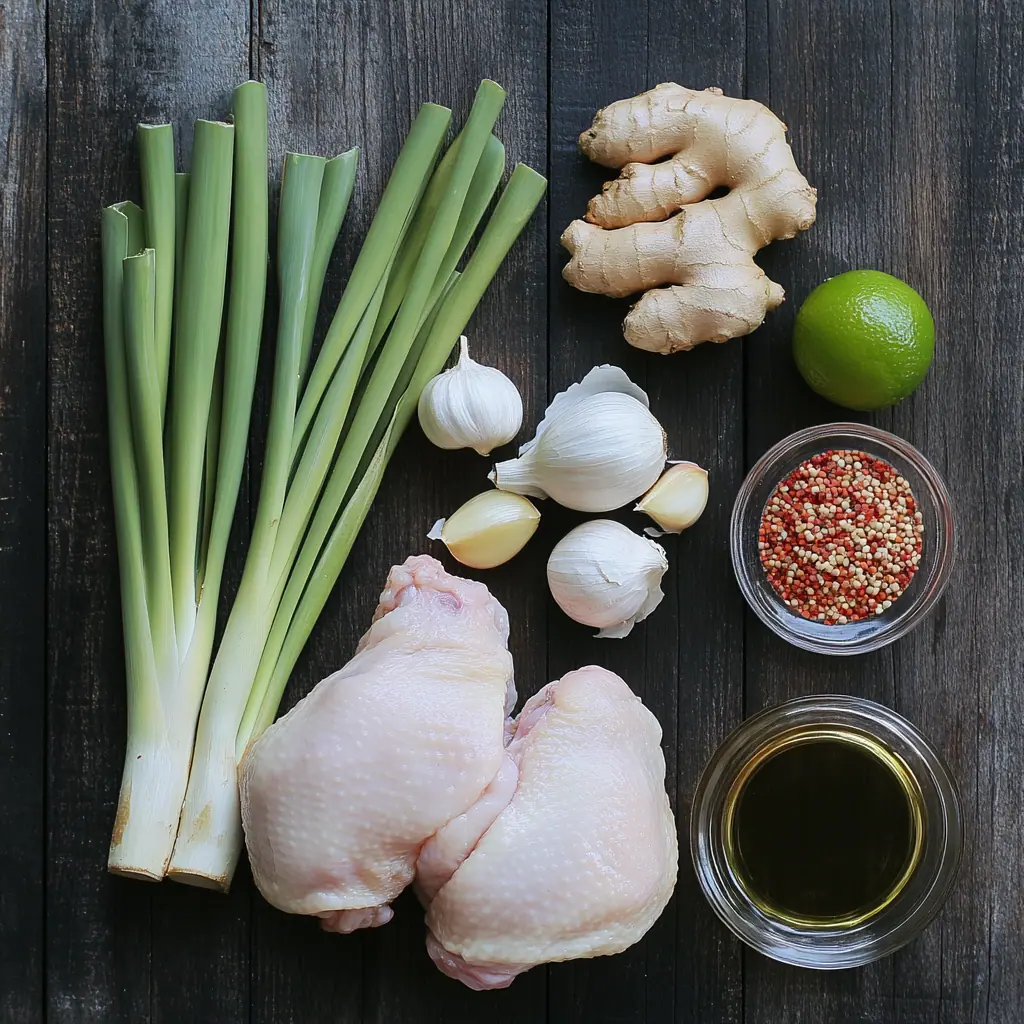
- 2 whole chickens (3-4 pounds each), quartered
- 2 stalks lemongrass
- 1 head garlic, minced
- 1 thumb-size ginger, grated
- ½ cup palm vinegar
- ¼ cup calamansi juice
- ¼ cup brown sugar
- 1 ½ teaspoons salt
- ½ teaspoon black pepper
For the Annatto Oil:
- 1 pound chicken skins and fat
- ¼ cup annatto seeds
- 2 garlic cloves, crushed
- 1 bay leaf
Equipment
- Large non-reactive bowl: For marinating the chicken without chemical reactions that could affect flavor
- Paper towels: For patting chicken dry before grilling
- Heavy-bottomed pan: For rendering chicken fat and making annatto oil
- Strainer: To separate the annatto seeds from the oil
- Grill or oven: For cooking the chicken (charcoal grill preferred for authentic flavor)
- Meat thermometer: To ensure chicken is properly cooked to 165°F
- Basting brush: For applying annatto oil during grilling
- Tongs: For safely turning chicken while grilling
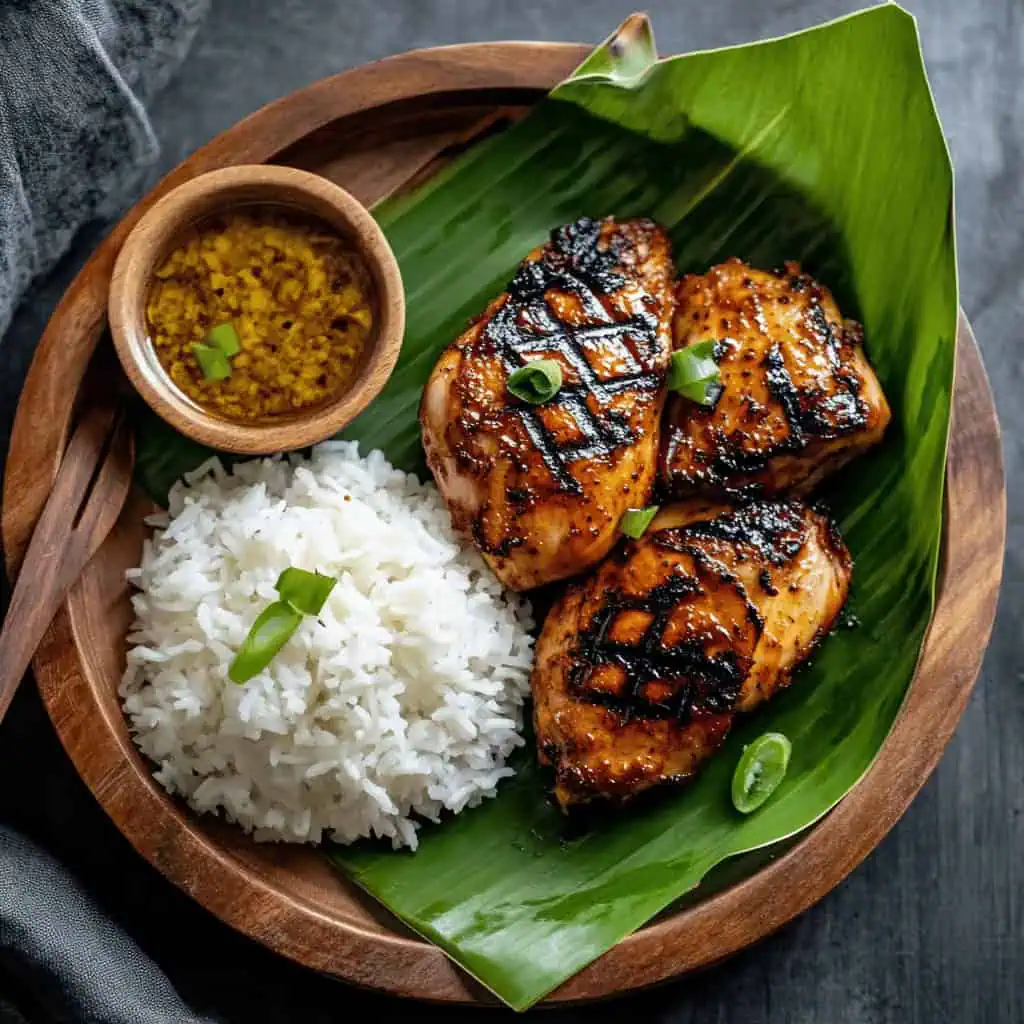
How To Make
- Start by preparing the lemongrass. Remove the tough outer layers and keep only the tender white portions. Finely mince these portions and lightly pound them to release their aromatic oils.
- In a large non-reactive bowl, combine the minced lemongrass with minced garlic, grated ginger, palm vinegar, calamansi juice, brown sugar, salt, and black pepper. Mix these ingredients thoroughly until the sugar completely dissolves.
- Clean your chicken pieces thoroughly and pat them dry with paper towels. Make small cuts or scores in the meatier parts of the chicken to help the marinade penetrate better.
- Place the chicken pieces in the marinade, making sure each piece is well-coated. Cover the bowl and refrigerate. Let the chicken marinate for at least 4 hours, but no more than 24 hours.
- While the chicken is marinating, prepare the annatto oil. Place the chicken skin and fat in a pan over medium-low heat (150°C/300°F). Cook until the fat renders and the skin becomes crispy, about 15-20 minutes. Add the annatto seeds, crushed garlic, and bay leaf. Continue heating for 2-3 minutes until the oil turns a deep orange color. Remove from heat and let it steep for 1 hour. Strain the oil and set aside.
- Prepare your grill to medium-high heat (180-200°C/350-400°F). If using an oven, preheat to 190°C/375°F. Remove the chicken from the marinade and discard the excess marinade. Pat the chicken pieces lightly with paper towels to remove excess moisture.
- Place the chicken pieces on the grill skin-side up first. Let them cook for 8-10 minutes before turning. While grilling, baste the chicken generously with the prepared annatto oil every 5 minutes. Turn the chicken pieces occasionally to ensure even cooking and to prevent burning.
- Continue grilling for 30-40 minutes total, or until the chicken is fully cooked. To check doneness, insert a meat thermometer into the thickest part of the chicken – it should read 74°C/165°F. The skin should be crispy and golden-orange in color, while the meat should remain juicy.
- Once cooked, let the chicken rest for 5-10 minutes before serving. This allows the juices to redistribute throughout the meat, ensuring each bite is moist and flavorful.
- Serve your chicken inasal hot with steamed rice, and prepare the traditional condiments: spiced vinegar and soy sauce-calamansi mixture. Drizzle additional annatto oil over the rice if desired.

Tips from Lola's Kitchen
- Use native chicken (free-range) for authentic flavor if available
- Don't skip the lemongrass - it's crucial for authentic taste
- Keep the skin on for maximum flavor and moisture
- Grill over charcoal for traditional smoky flavor
- Position chicken slightly away from direct heat to prevent burning
- For extra tenderness, add a small grating of green papaya to the marinade
- Save chicken skin from oil-making as a crispy pulutan (appetizer)
- For deepest flavor, prepare the marinade a day ahead to let flavors meld
Substitutions
- Calamansi: Use lime juice or lemon juice (2:1 ratio of lime to lemon for closest flavor)
- Palm vinegar: White vinegar or apple cider vinegar work well as alternatives
- Lemongrass: For emergency substitution, use 1 tablespoon lemon zest mixed with ½ teaspoon ginger powder
- Annatto seeds: Replace with 1-2 tablespoons annatto powder mixed directly into oil
- Brown sugar: Palm sugar or regular white sugar can be used instead
- Chicken quarters: Boneless thighs work for faster cooking but won't be as juicy
Troubleshooting
- Chicken burning too quickly: Create indirect heat zones on your grill by banking coals to one side, or lower your temperature and move chicken further from direct flame
- Marinade not penetrating: Score chicken pieces more deeply before marinating and extend marination time
- Chicken too dry: Use a meat thermometer to avoid overcooking; pull chicken at 160°F as it will continue cooking while resting
- Oil not turning orange enough: Increase annatto seeds or crushing them slightly before adding to oil
- Sauce separating: Whisk vigorously just before serving or blend briefly if needed
Storage & Reheating
- Refrigeration: Store in an airtight container for 3-4 days
- Freezer: Wrap well and freeze for up to 2 months
- Reheating Methods:
- Oven (Best Method): Preheat to 350°F, wrap chicken in foil with a splash of water, heat for 15-20 minutes until internal temperature reaches 165°F
- Grill: Use medium indirect heat for 5-7 minutes per side
- Microwave (Last Resort): Cover with a damp paper towel and heat in 30-second increments until warm through
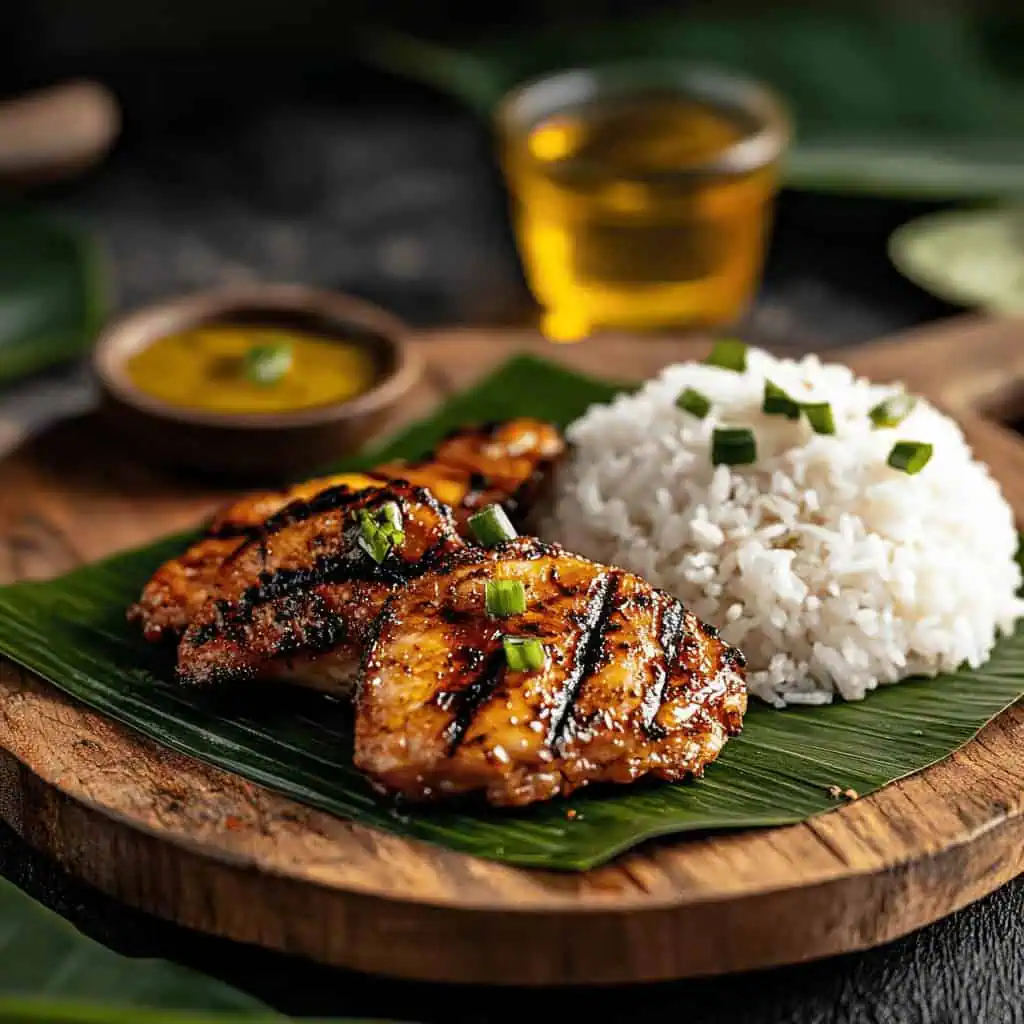
FAQ
Can I marinate overnight?
Yes, but don't exceed 24 hours as acids can begin breaking down the meat too much, resulting in a mushy texture.
Why is my chicken not as yellow as restaurant versions?
Commercial establishments often use food coloring for that bright yellow. Natural annatto gives a more authentic orange-red hue.
Can I cook this in the oven?
Yes, at 375°F for about 45 minutes, turning and basting every 15 minutes. You'll miss some smoky flavor but can finish under the broiler for more color.
Is chicken oil necessary?
It's traditional and adds authentic flavor, but you can substitute with annatto-infused vegetable or coconut oil for a lighter version.
Can I use chicken breast only?
Yes, but reduce cooking time to 20-25 minutes and baste frequently to prevent drying.
How do I make this less spicy for kids?
Simply reduce or omit black pepper in the marinade and serve the spiced vinegar on the side.
What's the best way to serve leftover chicken inasal?
Shred it and use in tacos, sandwiches, or fried rice for a delicious fusion meal.
Related
Looking for other recipes like this? Try these:
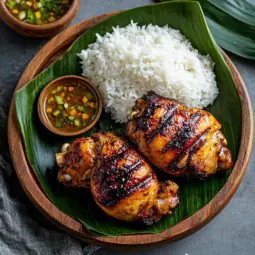
Authentic Bacolod Chicken Inasal (Filipino Grilled Chicken)
Ingredients
For the Chicken
- 2 whole chickens 3-4 pounds each, quartered
- 2 stalks lemongrass tanglad
- 1 head garlic bawang, minced
- 1 thumb-size ginger luya, grated
- ½ cup palm vinegar suka
- ¼ cup calamansi juice
- ¼ cup brown sugar asukal na pula
- 1 ½ teaspoons salt asin
- ½ teaspoon black pepper paminta
For the Annatto Oil (Atsuete Oil)
- 1 pound chicken skins and fat
- ¼ cup annatto seeds atsuete
- 2 garlic cloves crushed
- 1 bay leaf dahon ng laurel
Instructions
- Start by preparing the lemongrass (tanglad). Remove the tough outer layers of the lemongrass stalks and keep only the tender white portions (puting parte ng tanglad). Finely mince these portions and lightly pound them to release their aromatic oils (pisilin para lumabas ang sabaw).
- In a large non-reactive bowl, combine the minced lemongrass with minced garlic (bawang), grated ginger (luya), palm vinegar (sukang paombong), calamansi juice (katas ng kalamansi), brown sugar (asukal na pula), salt (asin), and black pepper (paminta). Mix these ingredients thoroughly until the sugar completely dissolves (hanggang matunaw ang asukal).
- Clean your chicken pieces thoroughly (linisin mabuti ang manok) and pat them dry with paper towels (patuyuin gamit ang paper towel). Make small cuts or scores in the meatier parts of the chicken to help the marinade penetrate better.
- Place the chicken pieces in the marinade, making sure each piece is well-coated (siguraduhing nalubog sa marinade ang bawat piraso). Cover the bowl with plastic wrap or a lid and refrigerate. Let the chicken marinate for at least 4 hours, but no more than 24 hours (ibabad sa ref ng 4 oras hanggang 24 oras).
- While the chicken is marinating, prepare the annatto oil. Place the chicken skin and fat in a pan over medium-low heat (150°C/300°F). Cook until the fat renders and the skin becomes crispy (hanggang lumabas ang mantika at lumutong ang balat), about 15-20 minutes. Add the annatto seeds (atsuete), crushed garlic, and bay leaf (dahon ng laurel). Continue heating for 2-3 minutes until the oil turns a deep orange color. Remove from heat and let it steep for 1 hour. Strain the oil and set aside.
- Prepare your grill to medium-high heat (180-200°C/350-400°F). If using an oven, preheat to 190°C/375°F. Remove the chicken from the marinade and discard the excess marinade. Pat the chicken pieces lightly with paper towels to remove excess moisture (patuyuin muli ng konti).
- Place the chicken pieces on the grill skin-side up first (balat ang nakaharap sa itaas). Let them cook for 8-10 minutes before turning. While grilling, baste the chicken generously with the prepared annatto oil every 5 minutes (pahiran ng mantikang atsuete kada 5 minuto). Turn the chicken pieces occasionally to ensure even cooking and to prevent burning.
- Continue grilling for 30-40 minutes total, or until the chicken is fully cooked. To check doneness, insert a meat thermometer into the thickest part of the chicken – it should read 74°C/165°F (siguruhing naluto ang loob ng manok). The skin should be crispy and golden-orange in color, while the meat should remain juicy.
- Once cooked, let the chicken rest for 5-10 minutes before serving (palamiginin ng konti bago ihain). This allows the juices to redistribute throughout the meat, ensuring each bite is moist and flavorful.
- Serve your chicken inasal hot with steamed rice (mainit na kanin), and prepare the traditional condiments: spiced vinegar (sinamak) and soy sauce-calamansi mixture (toyomansi). Drizzle additional annatto oil over the rice if desired.
- For best results when reheating leftovers, warm in a preheated oven at 150°C/300°F for 15-20 minutes, covered with foil to retain moisture (takpan ng foil para hindi matuyot). Always ensure reheated chicken reaches a safe temperature of 74°C/165°F before serving.
Tips from Lola's Kitchen
- Use native chicken (free-range) for authentic flavor if available
- Don't skip the lemongrass - it's crucial for authentic taste
- Keep the skin on for maximum flavor and moisture
- Grill over charcoal for traditional smoky flavor
- Position chicken slightly away from direct heat to prevent burning
- Save chicken skin from oil-making as a crispy pulutan (appetizer)
Nutrition
The Story Behind Bacolod Chicken Inasal (Filipino Grilled Chicken)
In the bustling streets of Bacolod City, known across the Philippines as the "City of Smiles," a distinctive aroma tells a story that began in the 1970s. Chicken Inasal, now a national treasure of Filipino cuisine, first sizzled over charcoal grills in the humble stalls of Bacolod's Railway Station, where locals perfected the art of marinated grilled chicken that would later conquer the entire archipelago.
The word "inasal" comes from the Hiligaynon word "nasal," meaning "to grill," but this dish is far more than your typical barbecue chicken. What sets authentic Bacolod Chicken Inasal apart is its signature marinade - a complex blend of native Filipino ingredients that creates its distinctive taste. The marriage of tangy calamansi, aromatic lemongrass (tanglad), pungent garlic, and ginger creates a flavor profile that's uniquely Negrense, while the annatto (atsuete) oil basting gives the chicken its iconic golden-orange hue.
Walk through Bacolod's famous Manokan Country today, and you'll find dozens of open-air restaurants specializing in this celebrated dish. Each family-run stall guards its own secret recipe, passed down through generations, yet all share the same cooking technique - skewering marinated chicken pieces on bamboo sticks and grilling them at a specific angle over hot coals to achieve that perfect balance of smokiness and juiciness.
The ritual of eating Chicken Inasal is just as important as its preparation. Traditionally served on banana leaves with garlic rice (sinangag), the dish isn't complete without its accompaniments: a small bowl of sinamak (spiced vinegar), calamansi, and the crowning glory - chicken oil (oil tinged orange with achuete seeds) drizzled over steaming rice. This combination has made it the go-to comfort food for Filipinos, from quick lunch breaks to grand family celebrations.
From its humble beginnings as street food to becoming the cornerstone of national restaurant chains like Mang Inasal, this Bacolod specialty has evolved while maintaining its authentic charm. Today, whether you're enjoying it in an air-conditioned mall restaurant or from a streetside grill, Chicken Inasal remains a testament to how regional Filipino cuisine can achieve national icon status while staying true to its roots.
What began as a local specialty has become a source of pride for Bacolod City, earning its place in the pantheon of Filipino culinary treasures. The dish perfectly embodies the Filipino talent for adapting influences (in this case, American barbecue culture) and transforming them into something uniquely their own through native ingredients and cooking techniques. Every bite of properly prepared Chicken Inasal tells this story of culinary heritage, family traditions, and the evolution of Filipino street food into a national obsession.
Remember: Perfect chicken inasal isn't just about the marinade—it's about achieving that ideal balance where the smokiness from charcoal grilling melds with the aromatics in the marinade, creating that distinctive flavor that's best experienced with a generous drizzle of annatto oil over hot rice and a side of sinamak.
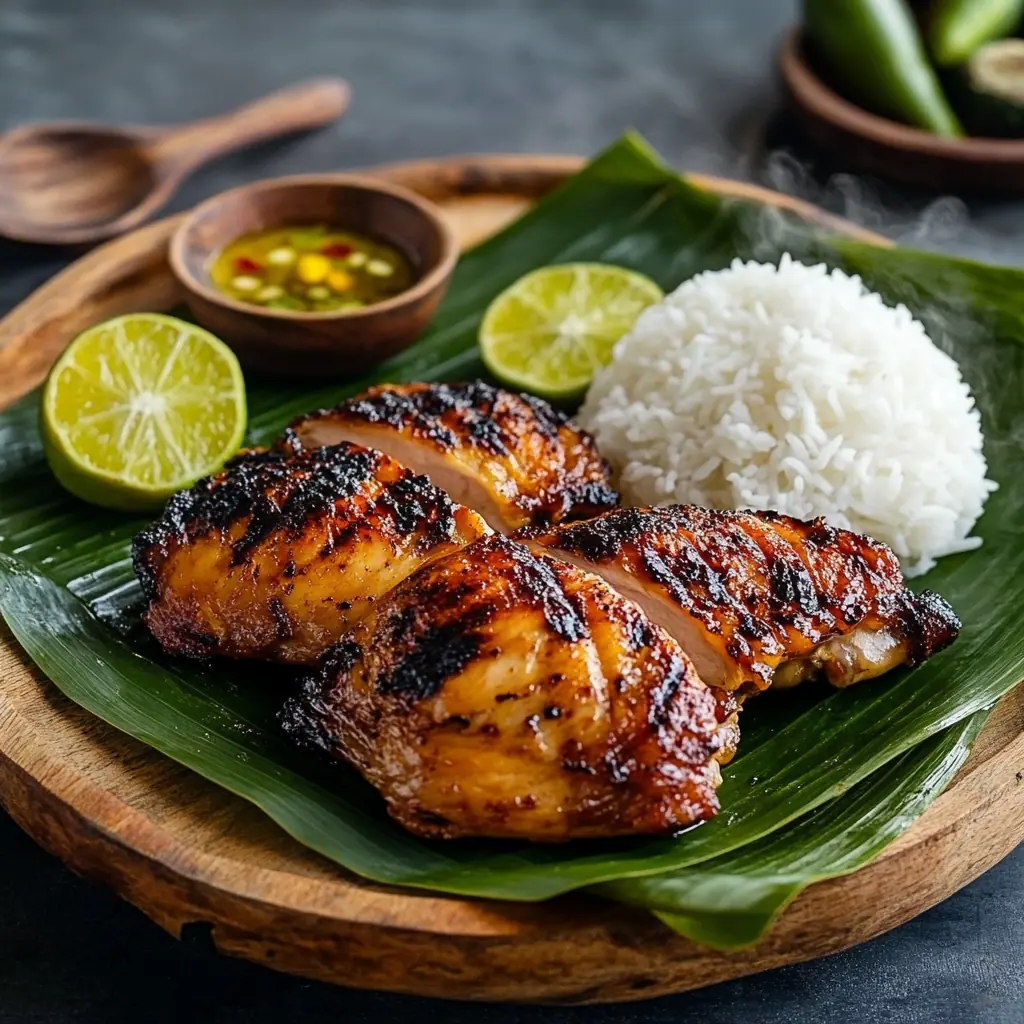

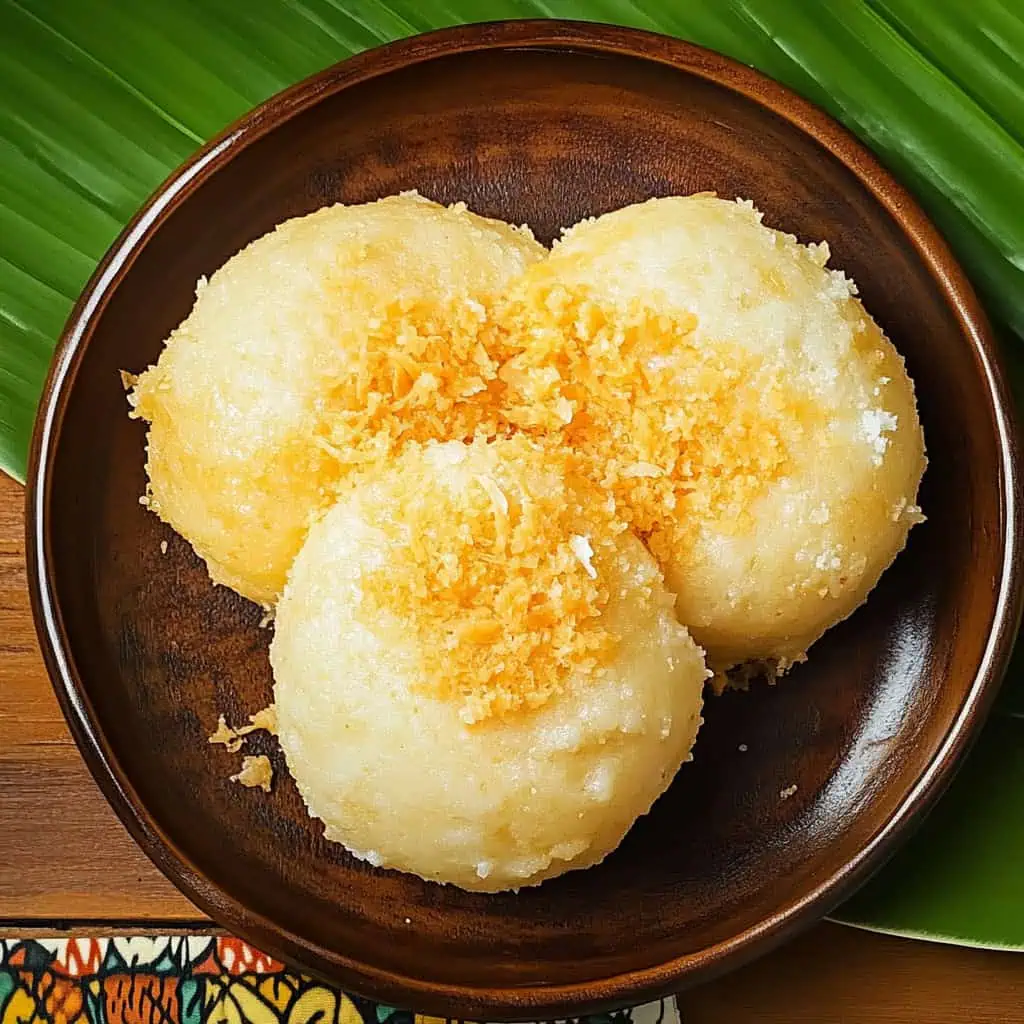
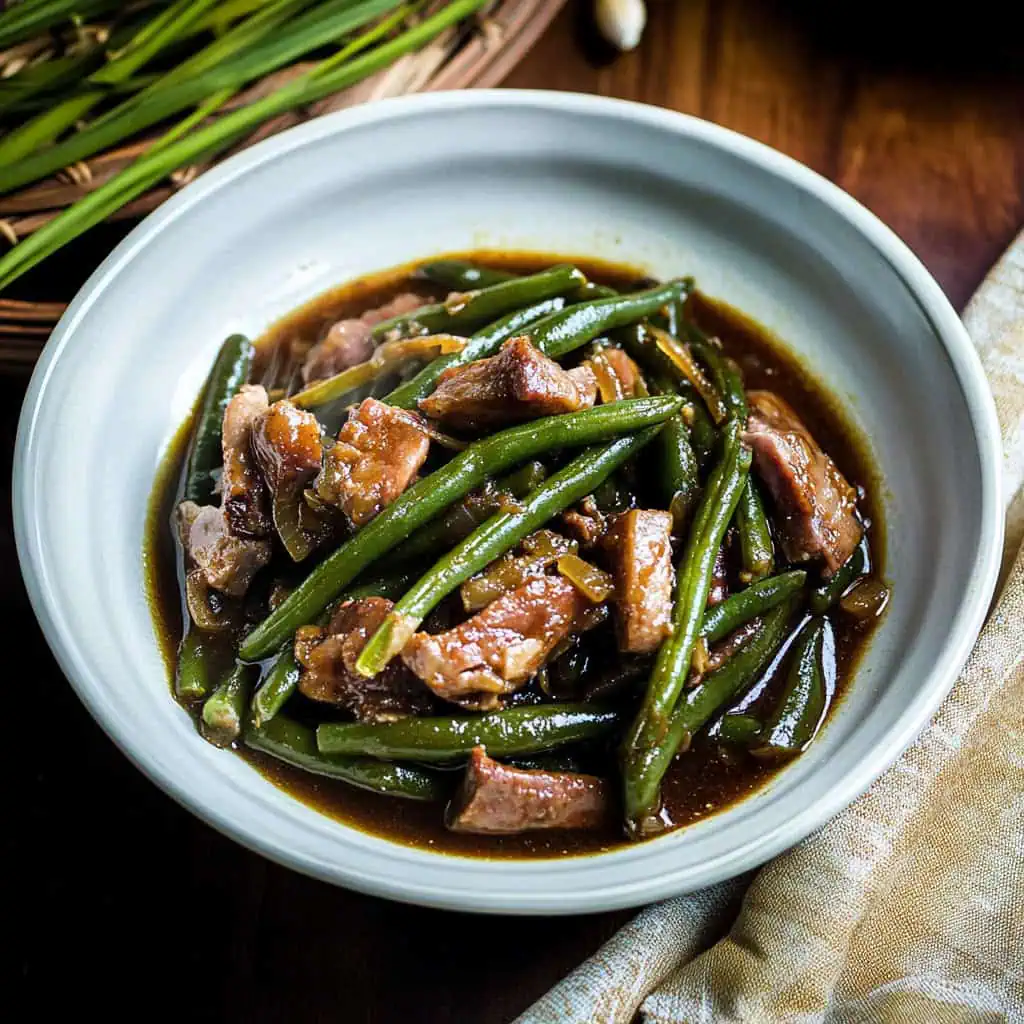

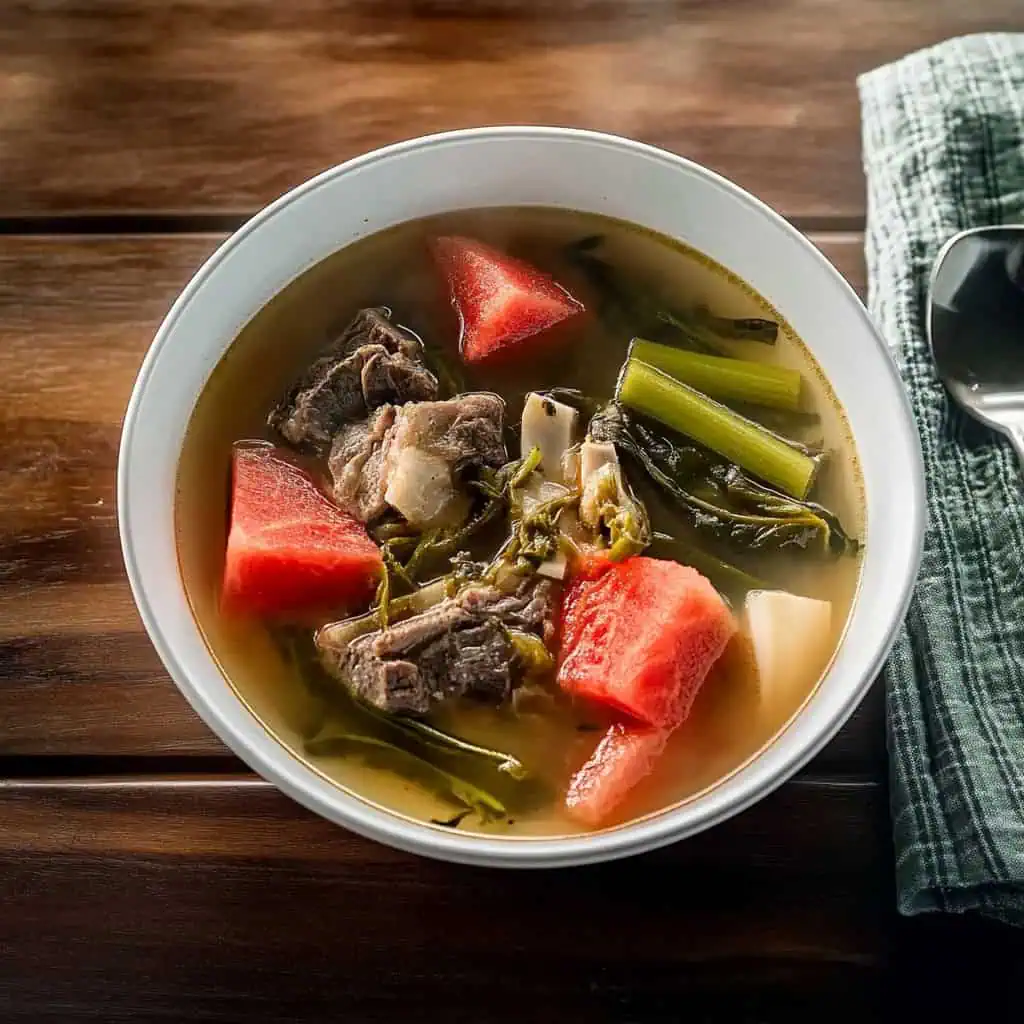
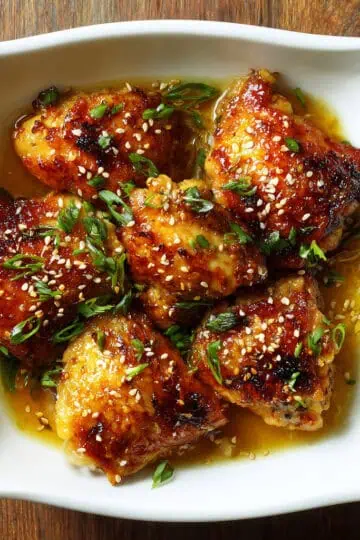
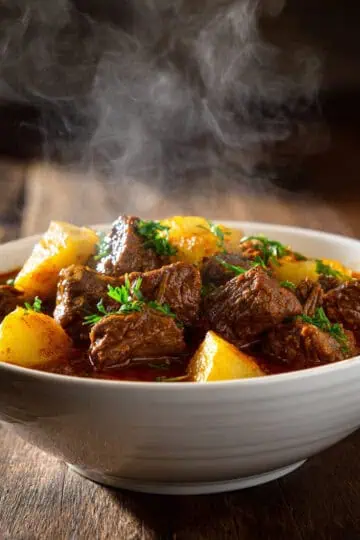
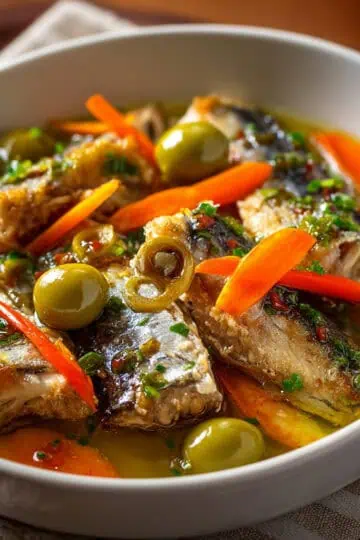

Comments
No Comments